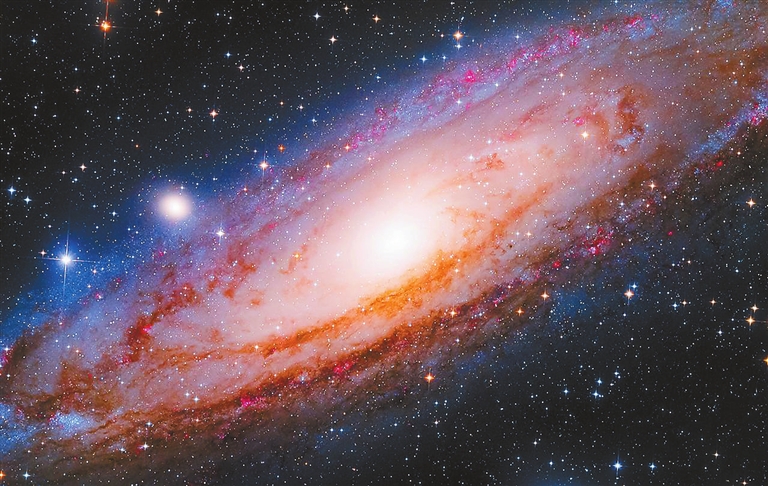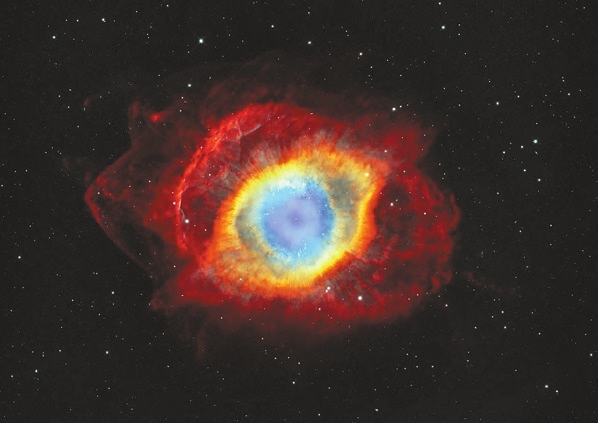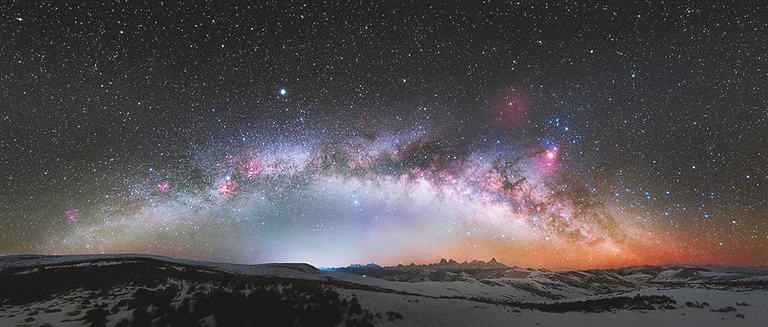




PHOTOGRAPHERS from China were among the top prize winners at the 14th Astronomy Photographer of the Year competition, organized by the Royal Observatory Greenwich, in London, Britain. The competition, which was divided into nine categories, with two other individual prizes, and an outright winner, attracted more than 3,000 entries from 67 countries and regions. Chinese photographers featured prominently and won prizes in three categories and one of the individual awards, with the most notable success being the young photographer award, jointly won by Yang Hanwen and Zhou Zezhen, both aged 14, for their image “Andromeda Galaxy: The Neighbor.” The official awards news release described their picture as “a spellbinding photograph of one of the Milky Way’s closest and largest neighbors that revealed the vibrant colors of a nearby galaxy, stars piercing through the darkness and emphasized the awe and wonder of the breathtaking sight.” The overall top prize, chosen unanimously by the judges, went to Gerald Rhemann from Austria, who also won in the Planets, Comets and Asteroids category, with his image “Disconnection Event,” which depicts a piece of Comet Leonard’s gas tail being disconnected and carried away by solar winds. Rhemann’s photograph won special praise from the judges. “Comet Leonard, a long-period comet, first identified in January 2021, was captured by the Austrian photographer in Namibia on Christmas Day,” according to the award announcement that added the comet will not be visible from Earth again. “This award is one of the highlights of my astrophotography work,” says Rhemann, who won the overall top prize of £10,000 (US$11,492), in addition to the individual category. “Andromeda Galaxy: The Neighbor,” the image jointly taken by two Chinese teenagers, was highlighted by Laszlo Francsics, chairman of the Hungarian Astrophotographers’ Association, the overall winner of the competition in 2019, and one of this year’s judges. “It is a superb capture by young astrophotographers, who also demonstrate their exceptional talent in processing a deep-sky photo,” says Francsics. Yang, one of the two Chinese teenagers to win the Young Photographer award, says, “I think this photo shows how gorgeous our nearest neighbor is.” “One of the main functions of astrophotography is to attract more people to fall in love with astronomy by showing the beauty of the universe,” says Zhou, the other teenager who won the award. Another Chinese winner at the competition was Liang Weitang, in the Stars and Nebulae category, with the picture “The Eye of God,” an ethereal image of the Helix nebula, which looks like a large eye gazing down on Earth. In addition, Chinese photographer Hu Zihui’s image “Stabbing Into the Stars” won in the skyscapes category, and the competition’s Sir Patrick Moore Prize for Best Newcomer, named after the legendary British astronomer and broadcaster, went to China’s Deng Lun for the picture “The Milky Way Bridge Across Big Snowy Mountains.” With these, the record of entries from China in the competition has been bolstered last year, Dong Shuchang won the overall top prize for the picture “The Golden Ring,” of a solar eclipse in June 2020, and in 2016 Yu Jun won the competition outright with his picture “Baily’s Beads.” (China Daily) | 
